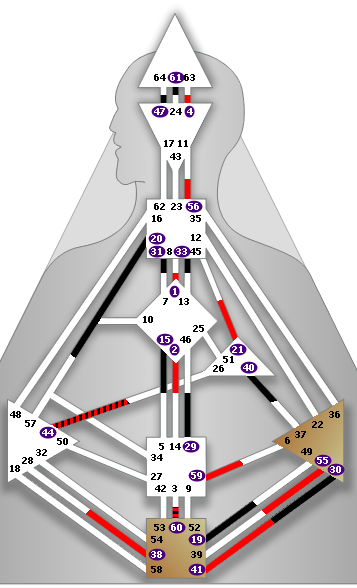Team dynamics in the context of Human Design refer to the interactions, relationships, and overall functioning of a team based on the unique characteristics and tendencies of each team member’s Human Design type and other chart factors.
Team Dynamics with Human Design
Human Design categorizes individuals into four main types: Initiators, Builders, Advisors, and Evaluators. Each type has distinct qualities, communication styles, decision-making strategies, and ways of engaging with the world. These differences can significantly impact how team members collaborate, communicate, and contribute to the team’s goals.
Understanding team dynamics through the lens of Human Design can lead to more effective teamwork, improved communication, and enhanced productivity.
Here’s how team dynamics can be understood within the framework of Human Design:
1. Initiators
 | Initiators are the ones that kick-off ideas and take action. They have a natural drive to create, lead and bring ideas into reality. In team dynamics, Initiators might take charge of initiating new projects, setting goals, and driving innovation. Their direct communication style can inspire action and motivate other team members. Contribution to Team: Initiators can provide direction and innovation. They excel at starting projects and driving them forward with their energy and determination. Interaction Style: Initiators tend to be independent and can sometimes appear assertive. They might benefit from considering the impact of their decisions on the team and informing others before taking action. |
2. Builders
 | Builders are known for their sustainable energy and ability to work diligently on tasks they’re passionate about. In teams, Builders can contribute by executing tasks efficiently and providing consistent effort. Their response-based decision-making strategy means they thrive when their gut feeling aligns with a task or project. Role: Builders are the workforce of the team. They have sustainable energy and are adept at taking on tasks. Contribution to Team: Builders bring consistent energy and dedication to tasks. They excel when doing work that aligns with their passions and strengths. Interaction Style: Builders are great collaborators who thrive in teamwork. They should ensure that they are responding from their gut feelings before committing to tasks. |
3. Advisors
 | Advisors have a gift for understanding systems and guiding others. They excel at seeing the big picture and providing valuable insights. In team dynamics, Advisors might play advisory or leadership roles, offering strategic guidance and recognizing the strengths of team members. Their invitation-based approach means they work best when recognized for their expertise and invited to contribute. Role: Advisors are natural guides and advisors. They excel at seeing the bigger picture and offering insights. Contribution to Team: Advisors provide valuable perspective and direction. They can see the strengths and potentials of team members and guide them effectively. Interaction Style: Advisors are skilled at recognizing the talents of others. They should wait for recognition and invitations to share their insights, rather than offering unsolicited advice. |
4. Evaluators
 | Evaluators are highly sensitive to their environment and can offer unique perspectives on team dynamics.In teams, Evaluators might serve as mirrors, reflecting the collective energy and dynamics back to the group. Their decision-making strategy involves waiting for a lunar cycle to gain a holistic understanding of situations before making important choices. Role: Evaluators are highly perceptive and sensitive to the team’s dynamics and environment. Contribution to Team: Evaluators offer a unique perspective due to their ability to absorb and reflect the energy of the team. They can point out underlying issues and trends. Interaction Style: Evaluators need time to process information and make decisions. Their insights can be incredibly valuable, but they should be given the space they need. |
Understanding team members’ Human Design types can help teams navigate challenges, capitalize on strengths, and foster effective communication. Here are some elements of how Human Design can impact team dynamics:
- Communication: Recognizing different communication styles and preferences based on Human Design types can promote clearer interactions and minimize misunderstandings.
- Decision-Making: Understanding how team members make decisions according to their Human Design strategy can lead to more conscious and aligned decision-making processes.
- Collaboration: By recognizing each type’s strengths and contributions, teams can foster a collaborative environment where members complement each other’s skills.
- Conflict Resolution: Human Design insights can offer strategies for addressing conflicts based on each type’s tendencies and communication styles.
- Roles and Responsibilities: Matching Human Design strengths with specific roles and tasks can lead to a more efficient distribution of work.
- Leadership Styles: Leadership roles can be assigned based on Human Design types, taking into account each type’s natural leadership qualities.
The Goal
Ultimately, the goal of understanding team dynamics through Human Design is to create a balanced, harmonious, and productive work environment where each team member’s unique strengths are recognized and leveraged for collective success. Team dynamics may create synergy when members’ strengths complement each other. Challenges can arise when communication styles clash or when decision-making strategies conflict.
Understanding these types within the team allows for more effective collaboration and conflict resolution. Team members can adapt their communication styles, leverage each other’s strengths, and address potential challenges based on the inherent traits of each type. Encouraging open discussions about Human Design and how it relates to team dynamics can foster a more inclusive and harmonious work environment. However, keep in mind that Human Design is not universally accepted, so approach these discussions with sensitivity and an understanding that not everyone may resonate with the concept.
By understanding the Human Design types of team members and their implications on various aspects of collaboration, organizations can create an environment that respects individual differences, maximizes strengths, and enhances overall team performance.
If you want to read more on business team dynamics, take a look at my blog post The Importance of Skill Diversity in a Successful Business Team.




0 Comments